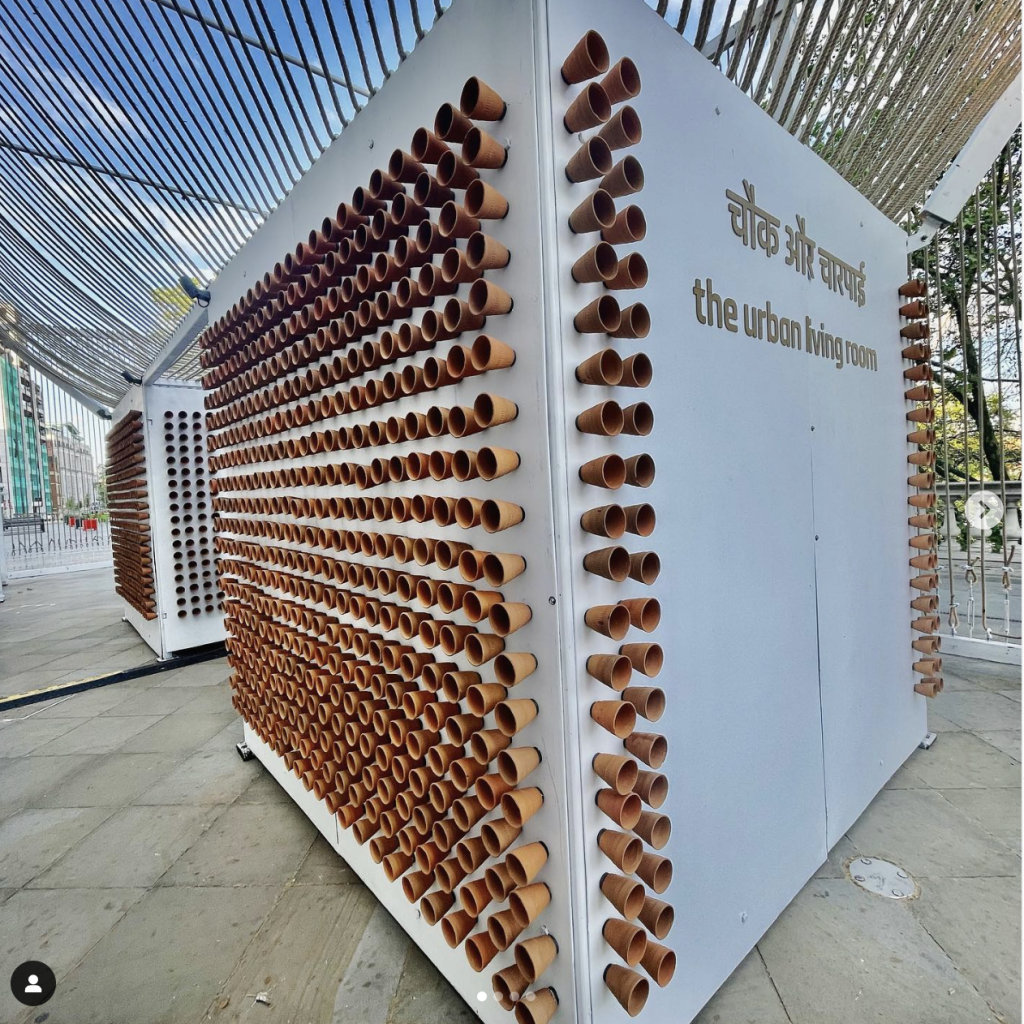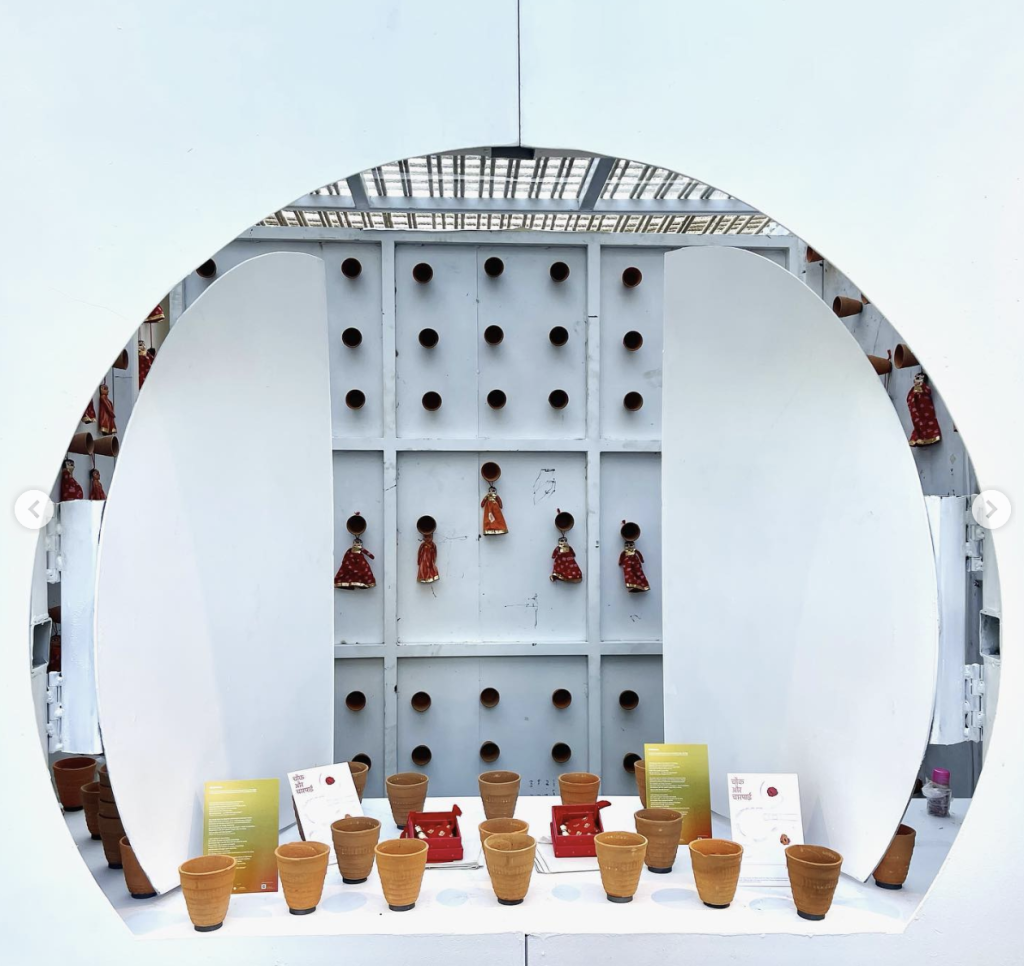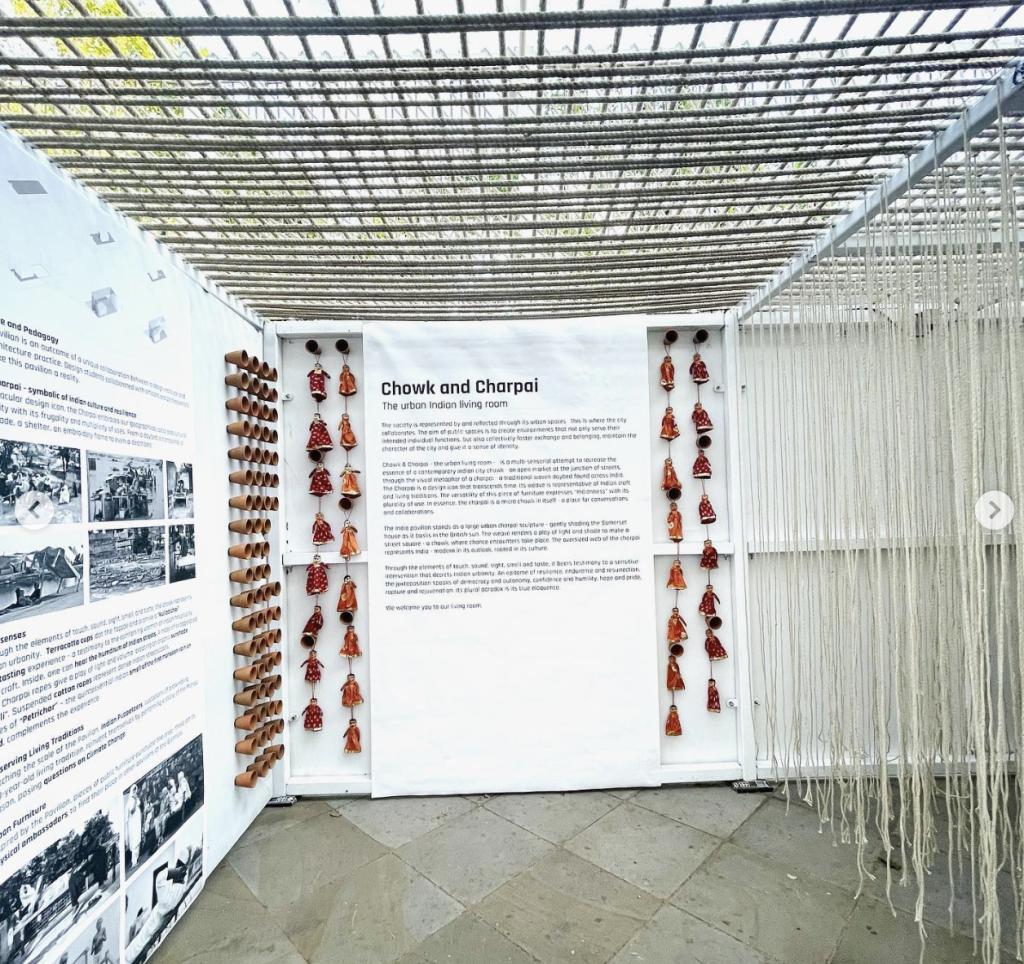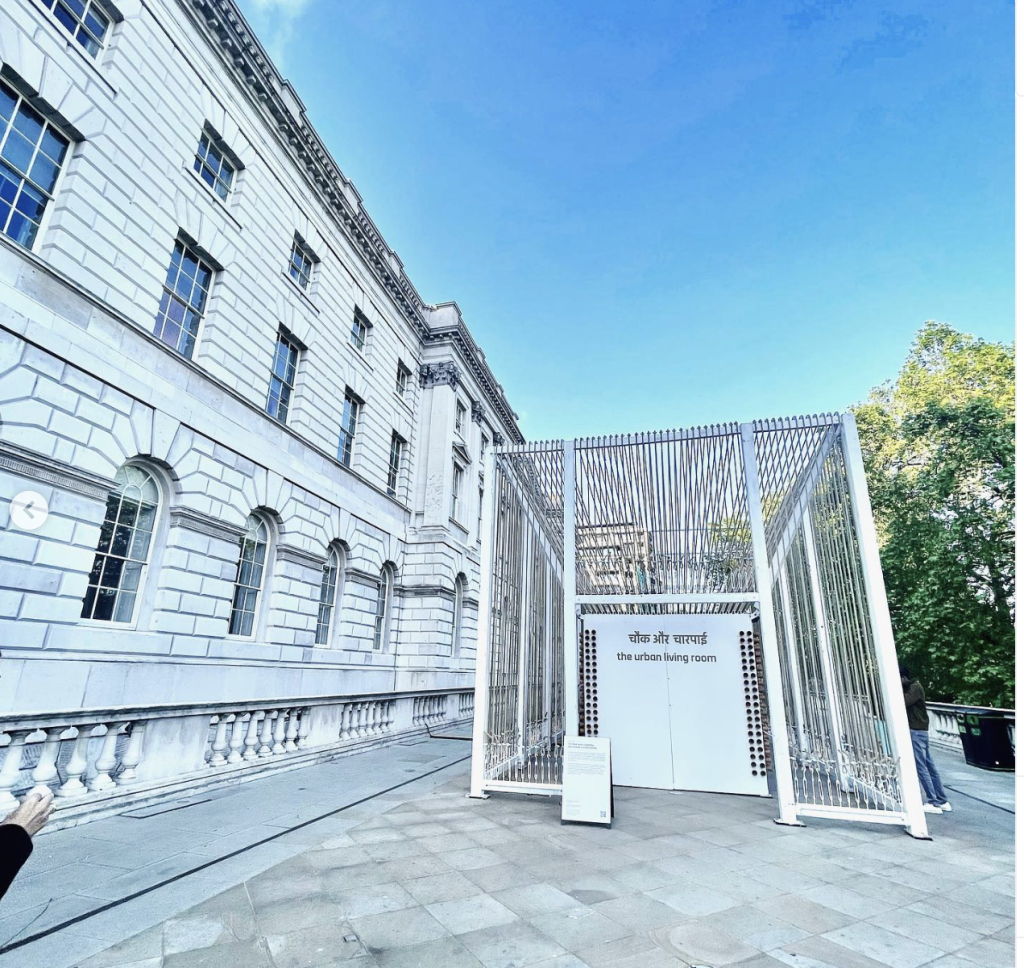Aditya Sisodia
The London Design Biennale (1-25 Jun’23) has brought together a diverse range of designers and innovators from around the world to showcase their interactive, musical, and kinetic creations. With the theme of “The Global Game: Remapping Collaborations,” the exhibition promises to offer a unique and immersive experience for visitors. Among the participating countries, the Indian pavilion stands out, capturing the vibrant essence of a contemporary Indian city chowk – an open market located at the junction of streets.

At the Indian pavilion, an installation takes centre stage, using the visual metaphor of a charpai, a traditional Indian woven daybed and a design icon that has withstood the test of time. The charpai symbolizes the versatility and plurality of Indian culture, reflecting its rich heritage and diverse usage. In this context, the charpai becomes a micro chowk, creating a space for conversations, collaborations, and encounters.

The concept behind the pavilion is to recreate the essence of a chowk, which serves as a crucial part of Indian urbanity and is often referred to as the living room of the city. Just as a chowk brings together people from different walks of life, the pavilion aims to foster an environment where societies collide and exchange ideas. A large charpai sculpture, gently shading Somerset House, serves as the focal point of the installation. Its intricately woven web creates a mesmerizing play of light and shade, mimicking the vibrant atmosphere of a bustling street square.
The charpai not only represents the physical space of a chowk but also embodies the spirit of modern India, rooted in its culture and yet embracing the future. It signifies the fusion of tradition and contemporary outlook, capturing the essence of India’s multifaceted identity. As visitors engage with the installation, they are invited to immerse themselves in the symbolic representation of a chowk, where the boundaries of culture, art, and design blur, giving rise to new possibilities.

The Indian pavilion at the London Design Biennale offers a captivating experience that transcends traditional notions of design and art. It showcases the power of public spaces to foster connections, inspire collaborations, and celebrate the diversity of human experiences. Through the fusion of traditional craftsmanship, innovative design, and a deep appreciation for cultural heritage, the pavilion invites visitors to explore the dynamic and ever-evolving spirit of India.
As the London Design Biennale continues to captivate audiences with its interactive and thought-provoking displays, the Indian pavilion stands as a testament to the rich artistic legacy and contemporary vision of the country. It serves as a reminder that even in an increasingly globalized world, cultural traditions and communal spaces hold immense value, providing a sense of belonging, dialogue, and inspiration.
The chowk and charpai installation invites visitors to pause, reflect, and engage with the essence of urban living, inviting them to be part of the global game of remapping collaborations. By blending tradition with innovation, the Indian pavilion not only showcases the beauty of Indian design but also encourages visitors to embrace the interconnectedness of our diverse world.
The Indian pavilion at the London Design Biennale presents an immersive experience that transports visitors to the lively streets of an Indian chowk. Through the symbolic representation of a charpai, it captures the essence of an urban living room, fostering conversations, collaborations, and cultural exchange. As visitors explore the installation, they embark on a journey that celebrates the vibrancy, heritage, and modernity of India’s design landscape.
Feature image courtesy: indiadesignforum
To know more. Click Here





